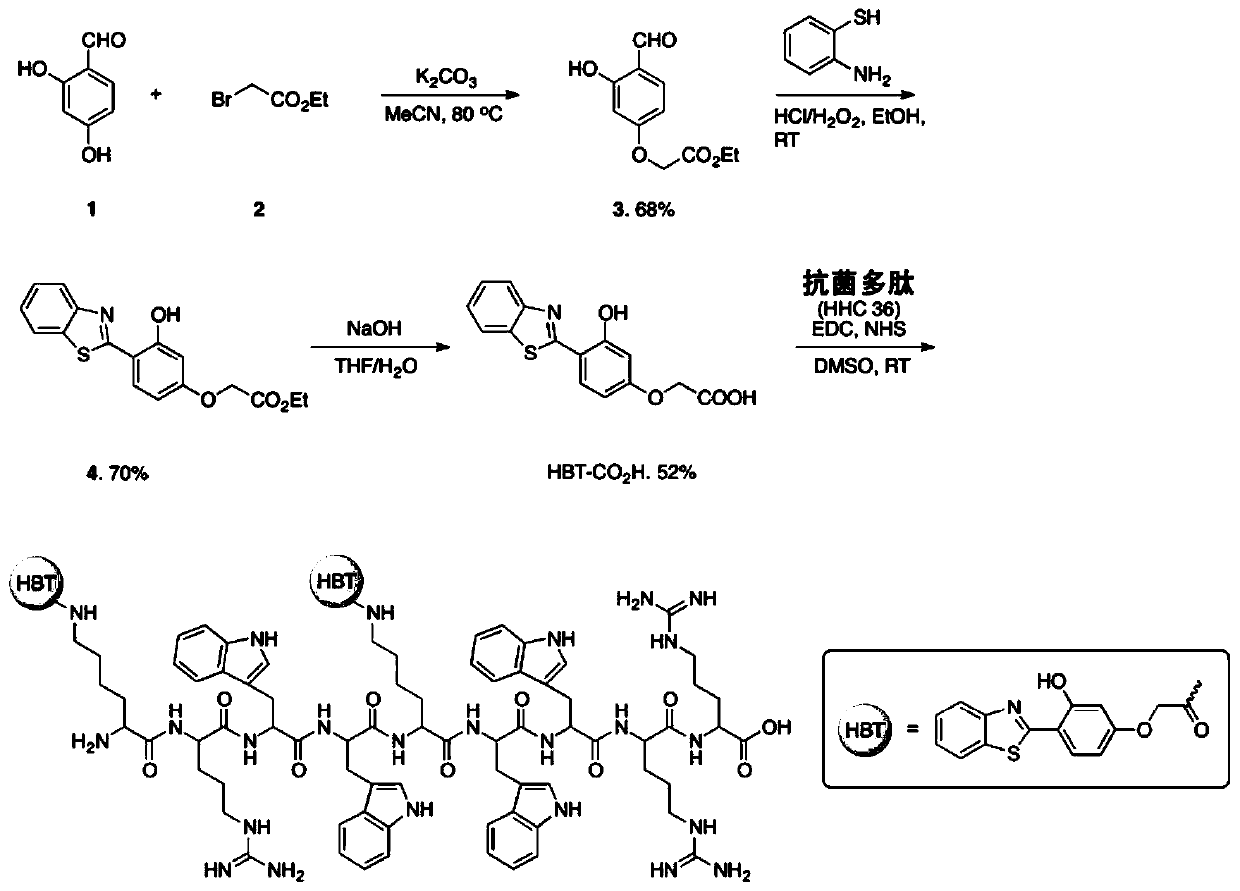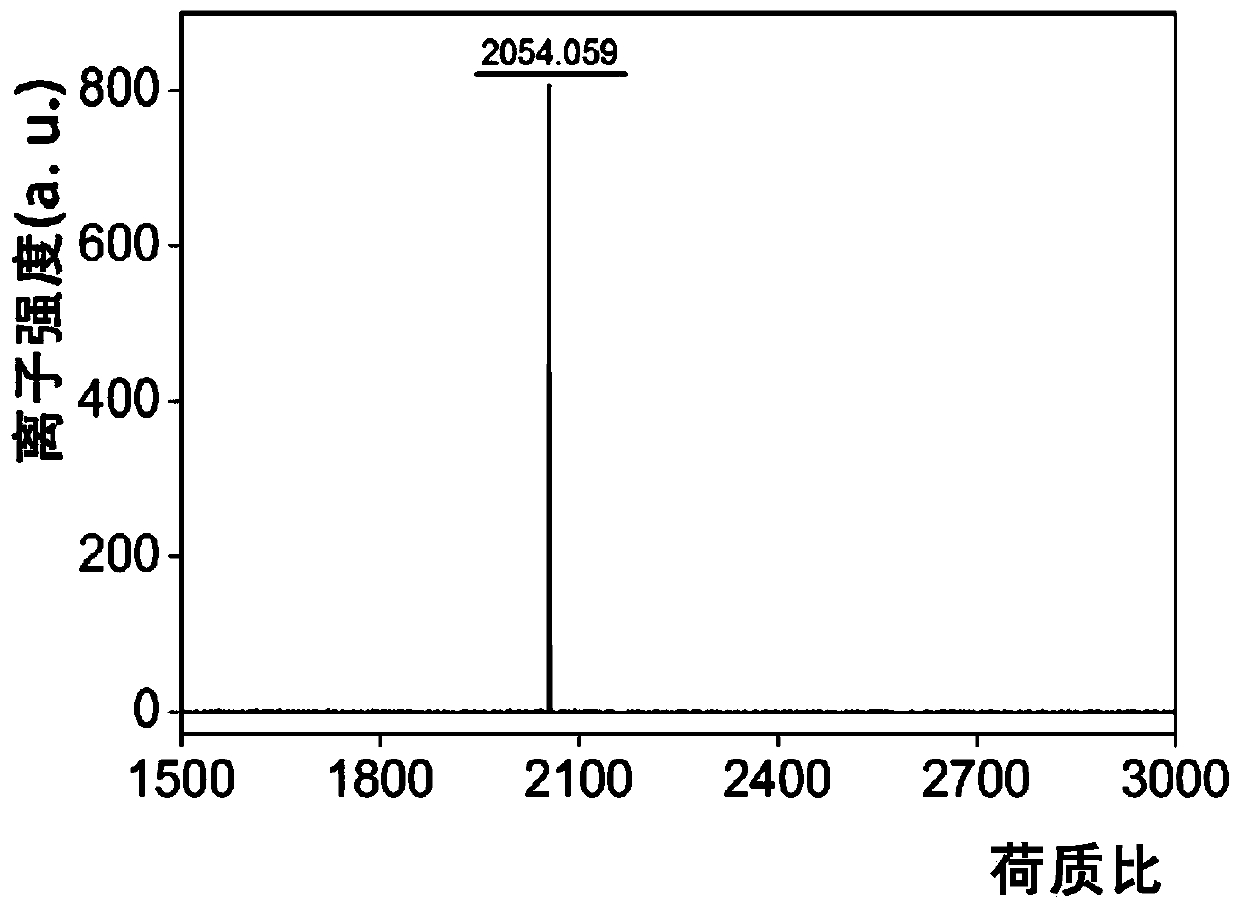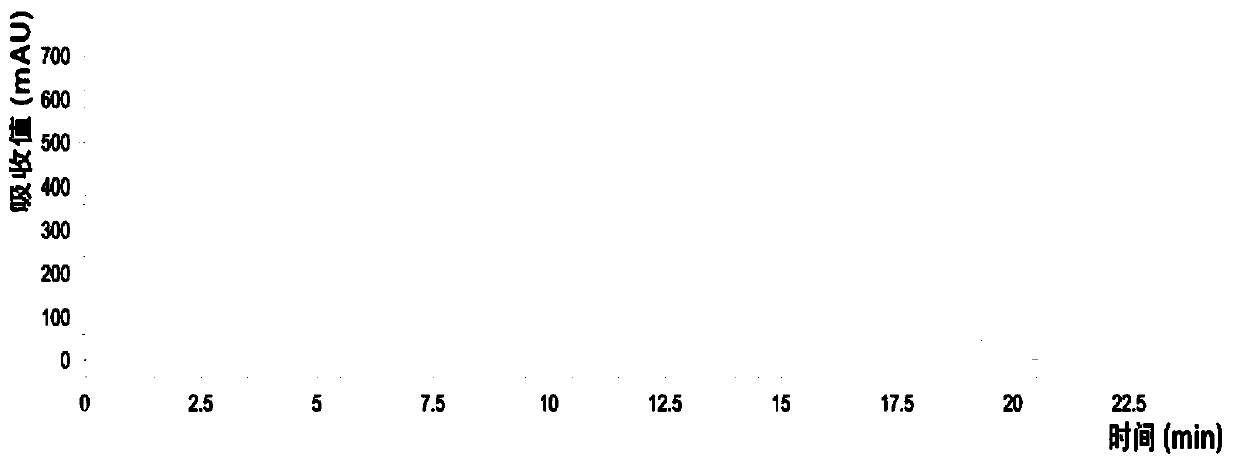A kind of aggregation-induced luminescent antibacterial polypeptide probe and its preparation and application
An aggregation-induced luminescence and antibacterial peptide technology, which is applied in the preparation methods of peptides, luminescent materials, peptides, etc., can solve the problems of difficult real-time monitoring of the binding process of antibacterial peptides and bacteria and sterilization methods, aggregation-induced quenching, and poor photostability. , to achieve the effect of not easy drug resistance, easy preparation and high antibacterial activity
- Summary
- Abstract
- Description
- Claims
- Application Information
AI Technical Summary
Problems solved by technology
Method used
Image
Examples
Embodiment 1
[0058] (1) 1-(3-dimethylaminopropyl)-3-ethylcarbodiimide (11.5mg, 0.06mmol), N-hydroxysuccinimide (6.9mg, 0.06mmol), AIE fluorescent molecule HBT-COOH (6mg, 0.02mmol) was dissolved in 1mL dimethyl sulfoxide, stirred at room temperature under nitrogen for 4 hours; then diisopropylethylamine (1.3mg, 0.01mmol) and antibacterial polypeptide HHC36 (produc The manufacturer is Shanghai Jier Biochemical Co., Ltd.) (7.4mg, 0.005mmol), and stirred again at room temperature under nitrogen for 12 hours; after the reaction, the mixed solution was filtered through a 0.2μm filter head, and then separated and purified by liquid chromatography. Wherein separation solvent A is to contain the HPLC grade water that volume fraction is 0.1% trifluoroacetic acid, and separation solvent B is to contain the HPLC grade acetonitrile that volume fraction is 0.1% trifluoroacetic acid; Freeze-drying (-50 ℃), obtain AMP-2HBT antibacterial Polypeptide probe (ie aggregation-induced luminescent antibacterial p...
PUM
 Login to View More
Login to View More Abstract
Description
Claims
Application Information
 Login to View More
Login to View More - R&D
- Intellectual Property
- Life Sciences
- Materials
- Tech Scout
- Unparalleled Data Quality
- Higher Quality Content
- 60% Fewer Hallucinations
Browse by: Latest US Patents, China's latest patents, Technical Efficacy Thesaurus, Application Domain, Technology Topic, Popular Technical Reports.
© 2025 PatSnap. All rights reserved.Legal|Privacy policy|Modern Slavery Act Transparency Statement|Sitemap|About US| Contact US: help@patsnap.com



